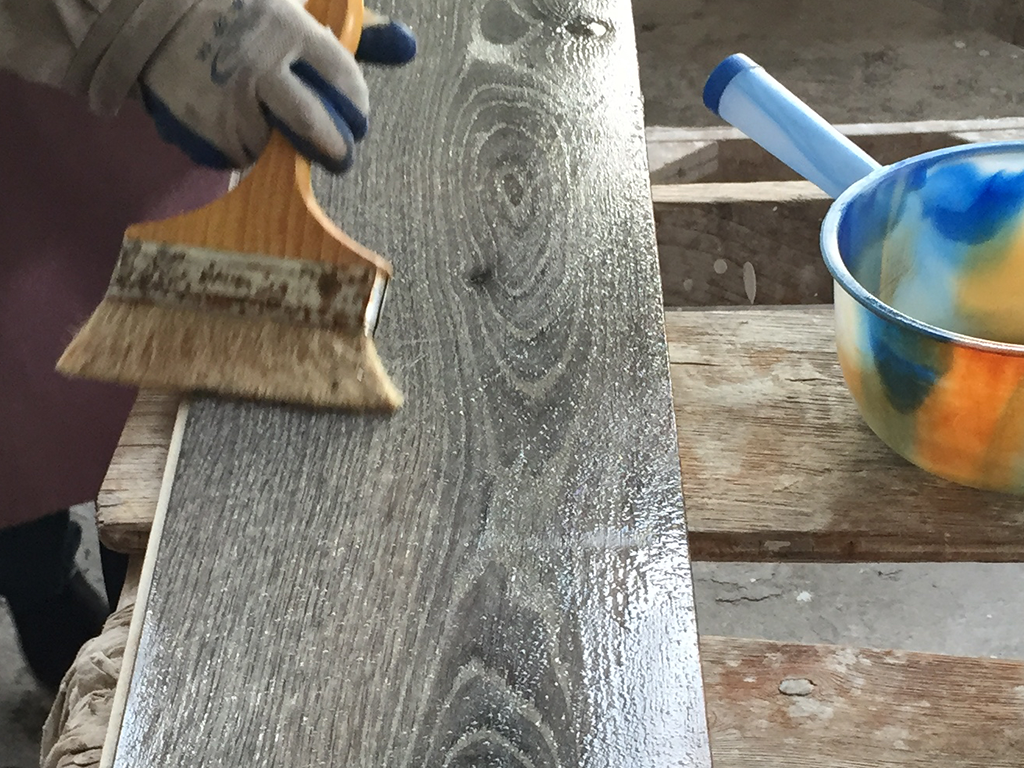
AN INTRODUCTION TO NATURAL REACTIVE COLOR PROCESSES
In recent years, people’s tastes in wood flooring have grown more and more sophisticated. Consumers and designers today often seek out the most natural-looking finishes possible, avoiding the traditional high-build, high-gloss floor finishes that once dominated the market. There has also been a trend away from color uniformity, as the painted look of the traditional stained floor has lost popularity in favor of floors that show more natural variation. The desire is for colors that look as though they developed naturally, either as a creation of the forest or through natural aging and patina.
At Monarch Plank we celebrate this movement toward ‘authenticity’ in the design aesthetic. As passionate wood people, we believe that wood’s natural beauty should be celebrated, not covered with heavily pigmented stains. We employ several different techniques to achieve more natural-looking colors: Fuming (aka Smoking), Carbonization, and Reactive Stain technologies. While traditional wood stains add color by painting pigments on top of the wood, these techniques create color from within the wood by causing reactions in its natural ingredients. The results are spectacular, but it’s important for consumers to understand and embrace these natural variations before they finalize their floor selection.
One consequence of these reactive color processes is that unlike traditional stains, which cover over and therefore even out the natural variation in the wood, reactive processes can actually increase the natural variation. Because they rely on naturally-occurring compounds in the wood such as tannins and sugars, and the quantities of those compounds present in each board can vary, it's possible to yield a wider range of color than you had before you applied the reactive process. Also, reactive processes can make the color more photosensitive than it would be naturally. For example, fumed (smoked) European Oak has a tendency to fade a bit with exposure to UV light, like Walnut, a species with similar coloration. Other reactive processes, like certain reactive stains, may darken with exposure to light, similar to many exotic species."
Learn more about these individual techniques
Fuming (aka Smoking)
Carbonization
Reactive Stain technologies
Embracing Natural Variation
Due to the enhanced variation created by these reactive color processes, it is impossible to represent these beautiful floors adequately in a small sample panel. When all we can see are three small pieces, and each is a different color, it can be shocking. A small panel that shows the extremes only has room for the extremes, and the overall look of the installed floor is lost. For some consumers, it’s hard to imagine how attractive those colors will be when they are sprinkled together in a larger area.
So that customers can fully appreciate these natural color processes, we encourage them to view as much material as possible to help visualize what the floor will look like when it’s fully installed. Photographs are helpful, but an even better way is to get 2-3 cartons of the flooring and lay them out in the space. We want our customers to experience this beauty before they make their decision, and are willing to take returns if they are not happy with what they see. It rarely happens. When the cartons arrive, be sure to lay out all of the material, spreading the color variation around so it can be viewed as a whole. Pulling just a handful of planks out and making a decision too quickly is a mistake. Almost always, the color variation grows on people, and the more area they see, the more they like how natural the floor looks. Rather than being a defect, the variation is truly these products’ greatest asset. Traditional stained floors simply can’t compare to the natural feeling and enduring visual interest created by these special coloring techniques.
